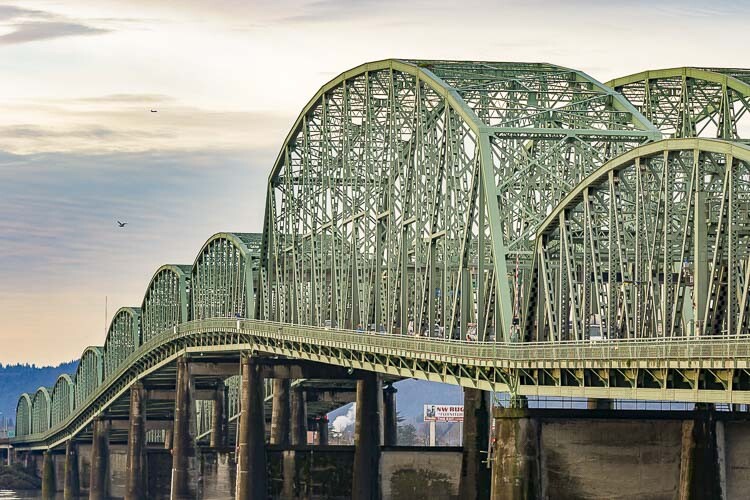
By reducing the price tag of the I-5 Bridge replacement project, the burden on taxpayers would be reduced and the need for tolls could be eliminated
Ken Vance, editor
Clark County Today
I’ve shared with you before in this space, one of the main reasons why I consider myself a conservative is because I strongly prefer a smaller, less-intrusive government. Another way to state that is I believe in preserving an individual’s rights over having the decisions of others thrusted upon us.

I sit here and watch this process to replace the Interstate 5 Bridge in total bewilderment. The process is everything I strongly dislike about how our world operates. For the record, let me again state that I’m not necessarily against a project to replace the I-5 Bridge. It is my preference that we address the need for a third or fourth crossing first. And then, when it is the appropriate time, let’s replace the I-5 Bridge with a responsible project that requires as little taxpayer involvement as possible. But, that’s exactly the opposite of what is happening and it just doesn’t make any sense to me.
The price of this project just keeps growing higher and higher. When it was known as the Columbia River Crossing (CRC), the price was originally $3.5 billion. The Interstate Bridge Replacement Program (IBR) team members later said they could build the CRC for between $3.2-$4.8 billion. The IBR price tag has now grown to as high as $7.5 billion, with another increase expected this summer. Other estimates have pushed the realistic price tag to $9 billion.
Keep in mind that the IBR breakdown of costs on the project is that the bridge itself will cost just $500 million. Also, remember that the states of Washington and Oregon are building a bridge over the Columbia River at Hood River for just $530 million. Add to that, the fact that Figg Engineering has offered proposals to build a third crossing over the Columbia River near 192nd Ave. for under $1 billion.
IBR Administrator Greg Johnson reminds us that the I-5 Bridge replacement project is actually addressing a 5-mile stretch of Interstate 5 stretching from Southwest Washington to the Columbia Blvd. interchange in Oregon. However, I and others contend that an I-5 Bridge replacement can be done for a whole lot less than what is being thrust upon us against our will.
The greatest motivation to reduce the price tag of an I-5 Bridge replacement project is obviously to save taxpayers’ money. However, it would also save the need for tolls on the new bridge, and tolls are something an overwhelming percentage of citizens oppose. A recent Oregon poll revealed 70 percent of Portland area residents oppose tolling.
The IBR plans to raise between $1.2 billion and $1.5 billion via bonding toll revenues. The plan is to go to Wall Street in 2029 to borrow the money. Initial possible IBR toll charges range from $1.50 to $3.55 per crossing, with higher prices when the bridge has more traffic.
Here are some of the many ways the price tag of the current project can be trimmed:
• The largest and most significant cut would be to eliminate the MAX light rail element of the project, which would save $2 billion. This would also eliminate the demand for the waterfront transit station, which supposedly will be at least 75 feet in the air, and require the eminent domain destruction (no cost yet) of the Hurley Building.
• The IBR could eliminate the demand by Vancouver for a “cap” over I-5 at Evergreen, where the city wants to create real estate. We still don’t have cost estimates for that component of the project.
• Many aspects of the $1.6 billion cost in restructuring/creating Oregon bridges and interchanges at Marine Drive and Hayden Island could be eliminated or done at a lower price tag. Presently, the IBR is proposing five or six separate bridges connecting north Portland with Hayden Island. These are not “necessary” for a bridge replacement project and Oregon can pay for these separately, at a future time when they have funding to do so.
• If the current two bridges could be repurposed, another $100-$200 million to destroy and remove the current two structures could be saved. That would also possibly avoid spending over $100 million in “mitigation” to four up river properties because of the proposed “bridge too low” for U.S. Coast Guard standards.
The tragic collapse of the Francis Scott Key Bridge in Baltimore early Tuesday morning highlights the importance of maritime traffic and bridge clearance issues. It emphasizes the importance of a much higher structure than the IBR wants today. It also possibly emphasizes the advantages of an Immersed Tube Tunnel (ITT) which would have no structures in the water at risk of a collision with maritime vessels.
The IBR program has gone to considerable effort and expense to communicate its proposed project to the public and key stakeholders on both sides of the river. But what strikes me as discouraging is that while the IBR team members have made that effort to share their vision, they have done an extremely poor job of listening to input from those same people. All the communication is in one direction. The evidence continues to suggest the majority of citizens don’t want light rail, tolls or a project that is more than double its necessary cost. Yet, they continue down the path they’ve chosen with no apparent willingness for compromise or to act on citizen input.
Nothing about this project seems reasonable. It does not save people travel time. It does not reduce traffic congestion. It does not accommodate the needs of the maritime community and the IBR team offers unrealistic and unbelievable future estimates for ridership on its proposed transit component.
The price tag of the three-mile light rail extension is three times what TriMet spent on its last new line – $200 million per mile versus $666 million per mile for the IBR.TriMet demands new taxes from both Washington and Oregon, to cover operations and maintenance of the three-mile light rail extension. C-TRAN has operated transit service into Portland for decades and never asked for taxpayer support from Oregon.
Administrator Johnson has already warned the community the price tag is going up. There is no public record of any discussions on how to cut the cost of this project to save taxpayer money. We are past due on this conversation getting underway in earnest.
Also read:
- Opinion: Hiding the growing cost of the Interstate Bridge replacementJoe Cortright of the City Observatory addresses the rising cost of the Interstate 5 Bridge replacement project.
- 90 minutes of delay on Southbound I-5 in Southwest Washington on Friday afternoon, July 26Travelers using southbound Interstate 5 through Woodland should expect up to 90 minutes of delay during Friday afternoon and evening and should delay travel or prepare for additional travel time.
- Nighttime paving work on I-5 and SR 14 in Clark County July 28-Aug. 9Nighttime travelers in Clark County should expect delays for maintenance and paving work beginning Sunday, July 28 until the morning of Friday, Aug. 9.
- Northeast 182nd Avenue/Northeast Ward Road to be closed on Aug. 1Northeast 182nd Avenue and Northeast 172nd Avenue in Clark County will have single-day closures on August 1 and August 5 for road preservation, with detours in place.
- Interstate Bridge Replacement program awarded $1.499 billion FHWA Bridge Investment Program grantInterstate Bridge Replacement program officials have shared that the program received $1.499 billion through the Federal Highway Administration’s Bridge Investment Program.









